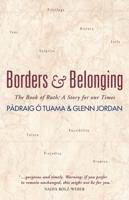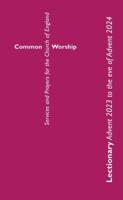Publisher's Synopsis
There is a great difference, carefully marked out in the Scriptures, between the ministry of John and that of Paul and Peter. That of Paul (as stated in Colossians 1), had a twofold character corresponding with the two headships of Christ; namely, that of the gospel which was preached in the whole creation under heaven, flowing from Christ's preeminence in creation; and that of the church, the body of Christ, as connected with Him as its head. The ministry of Peter, on the other hand, was confined to the circumcision. While he touches on the church as a spiritual house, which was being built up of believers as living stones on Christ as the Living Stone, he yet, as guided by the Holy Spirit, views believers in the character of pilgrims on their way, with Christ risen as their living hope, to "an inheritance incorruptible, and undefiled, and that fadeth not away, reserved in heaven for you, who are kept by the power of God through faith unto salvation ready to be revealed in the last time" (1 Peter 1:4-5). But John holds a different place. He does not enter into dispensations; nor, though once or twice stating the fact (as in John 13:1; John 14:1-3; John 17:24; John 20:17), does he take the saint, nor even the Lord Himself, up to heaven. Jesus, for him, is a Divine Person, the Word made flesh manifesting God and His Father, eternal life come down to earth. In addition to this, another kind of ministry was committed to him, even if at the moment mysteriously, by the Lord after His resurrection, in the words addressed to Peter concerning John, "If I will that he tarry till I come, what is that to thee?" (John 21:22). For there can scarcely be a question that the book of Revelation is the fulfillment of the mission for which he was thus designated. It may be said, moreover, that a closer examination reveals an intimate connection between the last two chapters of his gospel and the Apocalypse. In John 20, in addition to the setting forth of the assembly as gathered with Christ Himself in the midst, there is the conversion of the Jewish remnant of a later day, typified by Thomas who believed when he saw. (See Zech. 12:10-13.) John 21 gives the gathering in of the nations in the millennium, shown in figure by the disciples letting down their net on the right side of the ship, at the command of the risen Christ, and not being able to draw it for the multitude of fishes. There are therefore three epochs in these chapters: that of the church, that of the conversion of the Jewish remnant which will take place at the Lord's appearing, and that of the ingathering of the nations after the kingdom has been established in power. The book of Revelation contains these three epochs presented in a special way after the vision of the Son of Man recorded in Revelation 1, together with the events in heaven and the judgments upon earth, which are connected with and precede the appearing of Christ as the rightful Heir to take His power, to make good in government all that God is, as revealed in relation to the earth, and to reign until all enemies are put under His feet. The eternal state, in all its beauty and perfection, closes the subject of the book-that wondrous scene wherein God is all in all.









